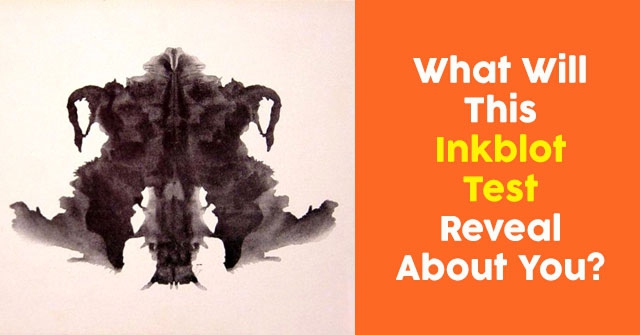
Rorschachs original scoring system emphasizes perceptual. This test is provided here just as a historical curiosity. Rorschach considered his test to be a test of perception and apperception rather than imagination. The first work on the MCR reported impressive predictive power, however later work indicates that scores from the MCR have little value and the test does not appear to have been used for much in the last fifty years. The Harrower-Erickson Multiple Choice Rorschach Test was developed during World War II for the large scale screening of U.S. Because completing the Rorschach Test is time intensive and requires and psychologist trained in its usage, there have been many attempts to convert the Rorschach into an objective test for ease of use.
Inkblot quiz series#
In the test, the participant is shown a series of ten ink blot cards and directed to respond to each with what they see in the inkblot. If you see a complex image in the inkblot, it could suggest emotional trauma. It was inspired by the observation that schizophrenia patients often interpret the things they see in unusual ways. Content creator Cecilia Ann has introduced a unique use of the Rorschach inkblot test on TikTok. The open-ended nature of the test-simply telling the practitioner what the person sees-may reveal aspects of the subconscious that may not have been accessible otherwise.The Rorschach Test is a projective psychological test developed in 1921 by Hermann Rorschach to measure thought disorder for the purpose of identifying mental illness. However, proponents of the test argue that it is a valuable tool to elicit aspects of a person's identity.

And despite efforts to standardize the test, there may still be differences in scoring and interpretation, rendering the results less reliable than other measures. The test seems to over-pathologize test-takers, finding higher rates of schizophrenia, depression, and narcissism than are typically found in the general population. Although there may be typical responses and idiosyncratic responses to the same blots, research suggests the Rorschach is not a valid instrument to test personality traits, predict behavior, or diagnose some disorders. Yet the test has still been critiqued on many fronts. They have developed standardized protocols to administer, score, and interpret the test. In response to criticism that the test is not a reliable assessment tool, psychologists have worked to improve and validate the Rorschach over time. The interpretation was originally designed to diagnose schizophrenia but today may aim to elicit insights about the subject’s personality, emotions, cognition, motivations, relationships, or mental health. For example, scoring criteria may include how common the response is, what part of the blot the subject focuses on, or if the person sees movement in the image. The subject’s responses are then recorded and interpreted according to standardized scoring systems. This process may occur repeatedly, to explore whether the subject perceives anything new the next time around.

The practitioner asks the subject to describe what they see in the blot, such as animals or people. The Rorschach test is conducted by a practitioner who sits next to a subject and presents them with 10 images of symmetrical inkblots, one at a time. He died soon after the book was published, but others extended his work and broadened the inkblot test. He therefore used inkblots to create a diagnostic test for schizophrenia, which he wrote in his book Psychodiagnostik. Swiss psychoanalyst Hermann Rorschach formalized this idea through the inkblot test he created-he noticed that people with schizophrenia tended to perceive the images differently than did other individuals. Humans have long explored the idea of interpreting ambiguous designs.


 0 kommentar(er)
0 kommentar(er)
